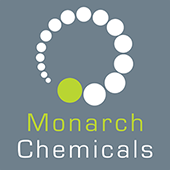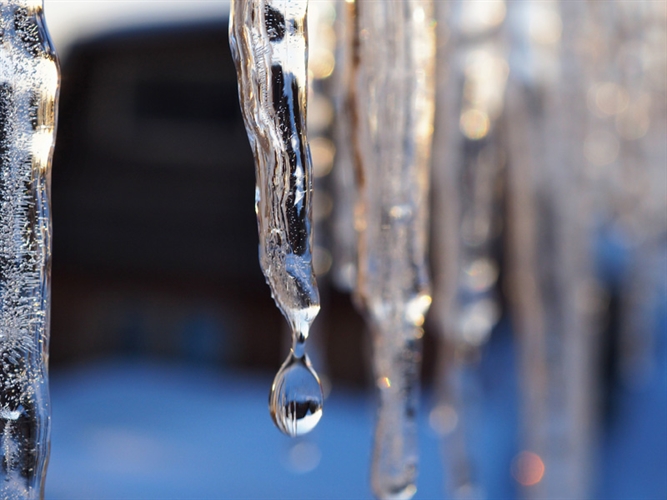As the United Kingdom is enveloped in the chill of winter, industries and businesses find themselves immersed in a daily struggle against the elements. This ongoing battle aims to safeguard uninterrupted operations and secure access amidst icy conditions.
Central to this effort are industrial surface de-icers – specialised chemical formulations whose use in well planned and strategically deployed. These solutions, engineered to resist frost and ice on surfaces, equipment, and vehicles, play a pivotal role in maintaining a secure and operational environment.
In this blog we decode the chemistry behind these de-icing solutions and explore the distinctive functions of various chemicals and their applications across the diverse landscape of the UK's industrial sector.
How does a de-icer work?
At its core, the science of de-icing involves manipulating the freezing point of water.
Various chemicals are employed to achieve this, each with its unique set of properties and functions. The most common chemicals used in industrial surface de-icers include sodium chloride (salt), potassium acetate, calcium magnesium acetate, and potassium formate.
Sodium Chloride
Sodium chloride , commonly known as salt, is a widely used de-icing agent, especially on paths, steps, and roadways. Its effectiveness as a de-icer stem from its ability to lower the freezing point of water and create a brine solution.
When sodium chloride is applied to ice or snow-covered surfaces, it dissolves in the thin layer of liquid water present on the ice. The dissolution process releases ions into the water, specifically sodium (Na⁺) and chloride (Cl⁻) ions. These ions interfere with the natural formation of ice crystals, preventing water molecules from arranging into a solid, crystalline structure at normal freezing temperatures.
The sodium and chloride ions then create a saline or brine solution on the surface, which has a lower freezing point than pure water. As a result, the brine remains in liquid form even at temperatures below the initial freezing point, further inhibiting the formation of ice.
However, it is worth noting that although sodium chloride is an extremely popular, cost-effective choice, it does have its limitations. Primarily, it is less effective at extremely low temperatures, can contaminate water or soil and can be corrosive to equipment and surfaces.
Potassium Acetate
Potassium acetate lowers the freezing point of water, preventing ice formation. It is effective at lower temperatures and is less corrosive than sodium chloride, making it suitable for use on speciality surfaces such as in the aviation industry on runways.
Calcium Magnesium Acetate (CMA)
Calcium Magnesium Acetate is an environmentally friendly option that acts as both a de-icer and anti-icer. It forms a barrier on surfaces, reducing the adhesion of ice. It is commonly used in areas where environmental impact is a significant concern, such as near water bodies and sensitive ecosystems.
Potassium Formate
Well known for its low environmental impact, potassium formate effectively lowers the freezing point of water. It is a highly effect de-icing agent commonly used in aviation, particularly for aircraft wing de-icing. Its function is like other de-icers, such as potassium acetate, but potassium formate has specific characteristics that make it well-suited for certain applications.
Freezing Point Depression: Potassium formate functions by depressing the freezing point of water. When applied to icy surfaces, it disrupts the natural process of ice crystal formation.
The presence of potassium formate lowers the freezing point of the water on the surface, preventing the formation of ice and facilitating the melting of existing ice.
Chemical Reaction: Potassium formate achieves its de-icing effect through a chemical reaction with ice. The formate ion (HCOO⁻) in potassium formate interacts with the ice crystals, destabilising the structure and causing the ice to melt.
Eutectic Solution: Potassium formate creates a eutectic solution with water, which is a mixture with a lower freezing point than either component alone. The eutectic solution remains in liquid form at lower temperatures, providing extended protection against ice formation.
One of the key advantages of potassium formate, especially in aviation applications, is its compatibility with aircraft materials. It is considered less corrosive than some other de-icing agents, making it suitable for use on aircraft surfaces, including wings. It is also regarded as an environmentally friendly de-icing option having a lower environmental impact compared to certain chloride-based de-icers.
Liquid vs. Granular De-icers
The choice between liquid and granular formulations adds another layer of complexity to the strategic battle against winter weather. Each form has distinct characteristics, influencing its efficacy in specific applications throughout industries and across businesses and sites within the UK.
Liquid De-icers:
Functionality: Liquid de-icers, such as potassium acetate and potassium formate solutions, are applied in a liquid form. They function by creating a thin, effective anti-icing or de-icing layer on surfaces.
These liquids have a lower freezing point than water, preventing the formation of ice and facilitating the melting of existing ice.
Application: Liquid de-icers are well-suited for pre-treatment or anti-icing applications. Applied before snowfall or freezing rain, they create a barrier that hinders the adhesion of ice to surfaces.
Commonly used on airport runways and taxiways, liquid de-icers are particularly effective in situations where prompt response to changing weather conditions is critical.
Advantages of liquid-based de-icers include rapid onset of action due to immediate contact with surfaces and greater coverage on irregular surfaces.
Granular De-icers:
Functionality: Granular de-icers, such as calcium magnesium acetate and traditional rock salt, are solid materials that are spread across icy surfaces. They function by lowering the freezing point of water upon dissolution.
Application: Granular de-icers are often used for reactive de-icing, addressing existing ice accumulation on surfaces. Ideal for scenarios where continuous application is not feasible, such as prolonged snowfall events.
Advantages of granular de-icers include ease of storage and handling, and suitability for widespread application across large areas.
Overall, the choice between liquid and granular formulations is a critical consideration. The decision hinges on factors such as weather conditions, surface type, and the specific requirements of the application. Whether deploying liquid solutions for preventative measures or granular substances for reactive de-icing, the ultimate goal remains unwavering — to ensure the safety and efficiency of your business amidst the challenges posed by winter weather.




